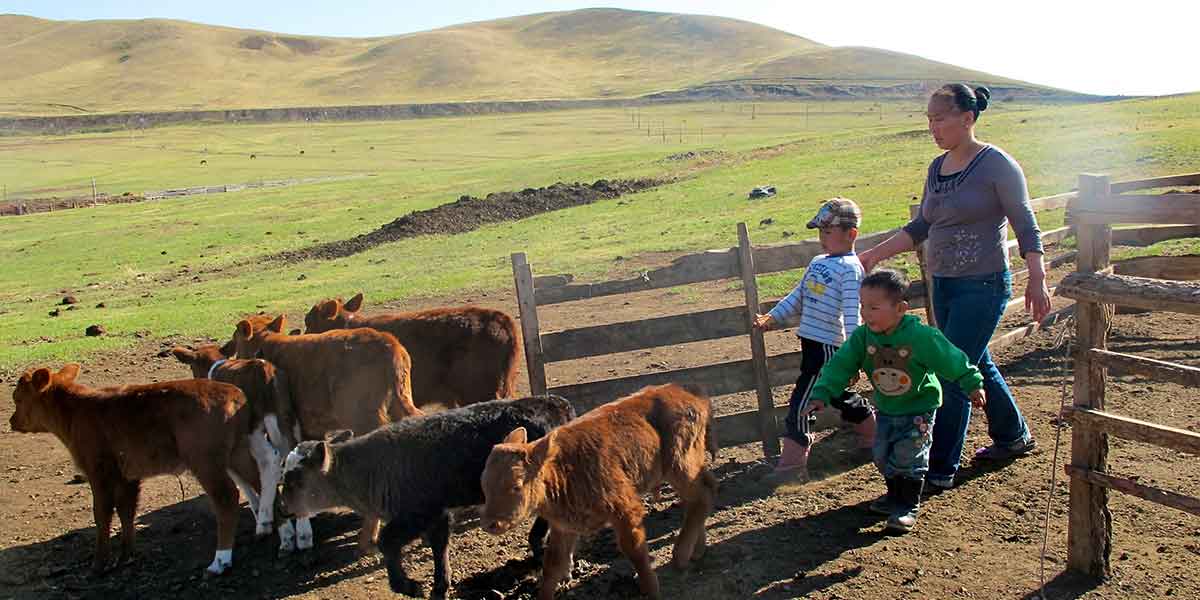
Globally, the sector contributes 18 percent (7.1 billion tons CO2 equivalent) of global greenhouse gas emissions. The expansion of livestock herds is responsible for much of the clearing of forests and overgrazing can result in poor soil, erosion and eventually desertification. MCC has worked to tackle this last issue by helping communities in Namibia and Mongolia to decrease the pressure that livestock herds place on communal pasture land and prevent further land degradation through rangeland management interventions.
In Mongolia, many people moving from the countryside to the cities have brought their animals into peri-urban areas. This increasing density of livestock has led to severe overgrazing and land degradation. MCC’s investment has created new land-use regimes and livestock watering points that will encourage investment, improved land use and higher agricultural productivity.
The Peri-Urban Rangeland Project enabled extensive mapping of peri-urban areas, identifying lands available for leases to herder groups and surveyed the underlying aquifers. By the end of the compact in September 2013, 387 herder groups had signed 15-year leases for specific pasture lands. The project supplied each group with materials for animal shelters and fences and installed wells on the parcels that lacked water sources; the herder groups will have to pay for these investments over the term of their leases, and the money will create a fund that will allow the project to be expanded to other areas.
These herder groups also received land management training and water resources and improving livestock health through vaccination and better feeding techniques. In return, participating herder groups will have to reduce herd sizes to the land’s carrying capacity, maintain proper herd composition and store fodder for emergency conditions. This will help herders increase the economic output and long-term health of each animal, and enable them to get through harsh winters while supplying the cities with dairy and other animal products. As a result, the herders expect to earn more money, and Mongolia is expected to benefit from reduced land degradation and long-term environmental sustainability.
In Namibia, livestock herders faced challenges: most of the land in the northern regions is communal, cannot be privately owned and is managed jointly by the government and traditional leaders. This rangeland is particularly important to poor and vulnerable people as it provides access to land for crops and livestock grazing of both small and large ruminants, but land administration authorities at the local and central level have struggled to effectively manage and protect these common areas against encroachment from intensifying demand for land.
In some cases, large areas of commonage were appropriated for individual use—sometimes with authorization and sometimes without—and fences were erected preventing the community from accessing grazing areas and other vital resources like water. Many communities have historically lacked the tools to effectively control misallocations of commonage or to manage its use on a sustainable basis, which resulted in overuse and degradation.
In 2002, the government of Namibia adopted the Communal Land Reform Act to address some of these problems. The law established communal land boards, created new rules for land allocation and required authorization for most existing fences and new fences.
MCC supported the implementation of this law through mapping of communal areas and individual parcels, training and awareness-raising, and the identification of commonage areas to allow communities to secure their land tenure rights and improve land management. MCC also worked with communities to implement improved grazing and herd management practices.
By project close in September 2014, 58 northern communal grazing areas received technical assistance promoting improved community-based combined herding and pasture management and nearly 8,000 parcels were registered in the land registration system.
With more secure rights to their pastures, herders in both Mongolia and Namibia will be able to produce healthy cattle while still maintaining the health of the rangeland for future generations of people and livestock.

